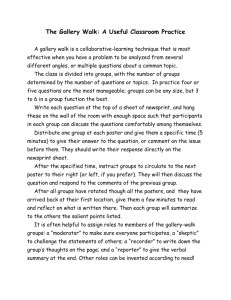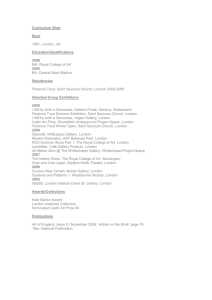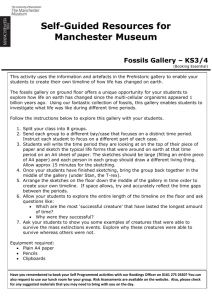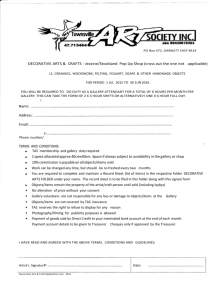Word - Saint Mary`s Press
advertisement
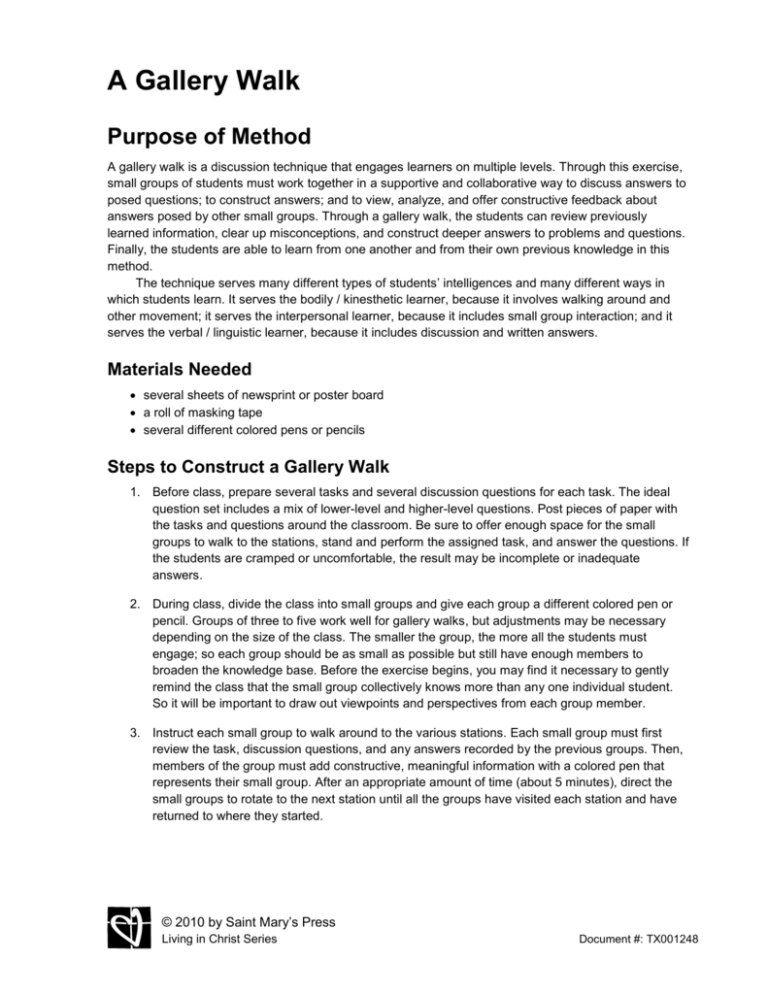
A Gallery Walk Purpose of Method A gallery walk is a discussion technique that engages learners on multiple levels. Through this exercise, small groups of students must work together in a supportive and collaborative way to discuss answers to posed questions; to construct answers; and to view, analyze, and offer constructive feedback about answers posed by other small groups. Through a gallery walk, the students can review previously learned information, clear up misconceptions, and construct deeper answers to problems and questions. Finally, the students are able to learn from one another and from their own previous knowledge in this method. The technique serves many different types of students’ intelligences and many different ways in which students learn. It serves the bodily / kinesthetic learner, because it involves walking around and other movement; it serves the interpersonal learner, because it includes small group interaction; and it serves the verbal / linguistic learner, because it includes discussion and written answers. Materials Needed several sheets of newsprint or poster board a roll of masking tape several different colored pens or pencils Steps to Construct a Gallery Walk 1. Before class, prepare several tasks and several discussion questions for each task. The ideal question set includes a mix of lower-level and higher-level questions. Post pieces of paper with the tasks and questions around the classroom. Be sure to offer enough space for the small groups to walk to the stations, stand and perform the assigned task, and answer the questions. If the students are cramped or uncomfortable, the result may be incomplete or inadequate answers. 2. During class, divide the class into small groups and give each group a different colored pen or pencil. Groups of three to five work well for gallery walks, but adjustments may be necessary depending on the size of the class. The smaller the group, the more all the students must engage; so each group should be as small as possible but still have enough members to broaden the knowledge base. Before the exercise begins, you may find it necessary to gently remind the class that the small group collectively knows more than any one individual student. So it will be important to draw out viewpoints and perspectives from each group member. 3. Instruct each small group to walk around to the various stations. Each small group must first review the task, discussion questions, and any answers recorded by the previous groups. Then, members of the group must add constructive, meaningful information with a colored pen that represents their small group. After an appropriate amount of time (about 5 minutes), direct the small groups to rotate to the next station until all the groups have visited each station and have returned to where they started. © 2010 by Saint Mary’s Press Living in Christ Series Document #: TX001248 A Gallery Walk Page | 2 4. While the small groups are working, walk around to informally assess their learning and identify any areas that may need further exploration or clarification. 5. When the small groups return to their original station, have them review comments made by their peer groups. Then have the students synthesize the comments and prepare a brief oral report to present to the larger class. These oral reports serve as a closing summary and provide an opportunity for all the students to check their own understandings. 6. You may want to wrap up the oral reports with closing comments to summarize the learnings. © 2010 by Saint Mary’s Press Living in Christ Series Document #: TX001248




